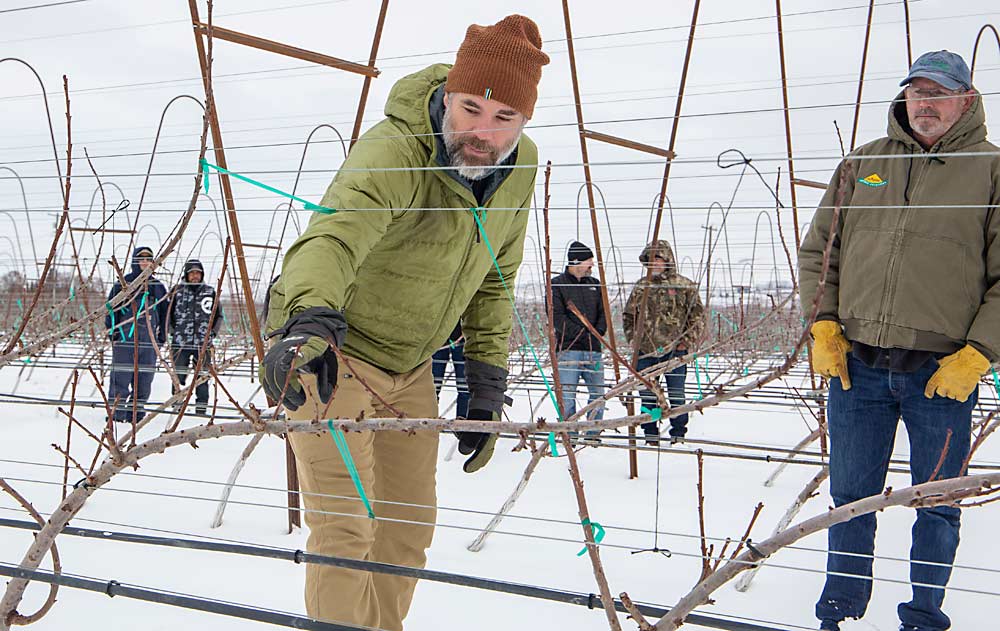
A UFO bent in opposing directions. A trellised but informal four-leader. A formal two-leader Tatura with limbs trained down.
There are numerous ways to design cherry systems, and about 80 growers got a glimpse of three in January at the annual winter tour held by Matt Whiting, a Washington State University tree fruit physiologist. The tour, which preceded the annual Cherry Institute, took advantage of the winter conditions and leafless branches to reveal the training decisions of different orchardists.
This year’s tour stuck close to Prosser, home of WSU’s Irrigated Agriculture Research and Extension Center, where Whiting is based. Here are a few details from each orchard.
At Olsen Bros. Ranches in Benton City, tour-goers took in new blocks of Black Pearl cherries on Gisela 12 rootstocks and Santinas on Gisela 6, both trained in a UFO system.
“It takes more trees to do it this way, but I know it works because we’ve done it,” said orchard manager Keith Oliver.
The trees were planted in the spring of 2021 with 4-foot spacing, but Oliver did something a little different. He bent each alternating tree to opposite sides of the V-trellis, in effect leaving 8 feet between each horizontally lain trunk. The block is just getting started, but Oliver expects to have a better chance of filling the canopy uniformly with upright shoots.
In 2011, the farm trained a block of Santina cherries the same way. That block produced 12 tons per acre in the fourth leaf, with good fruit size, which Oliver said proves the UFO leads to high early yields with less pruning in the early years than other systems.
To plant in UFO, Oliver suggested asking nurseries not to head new trees.
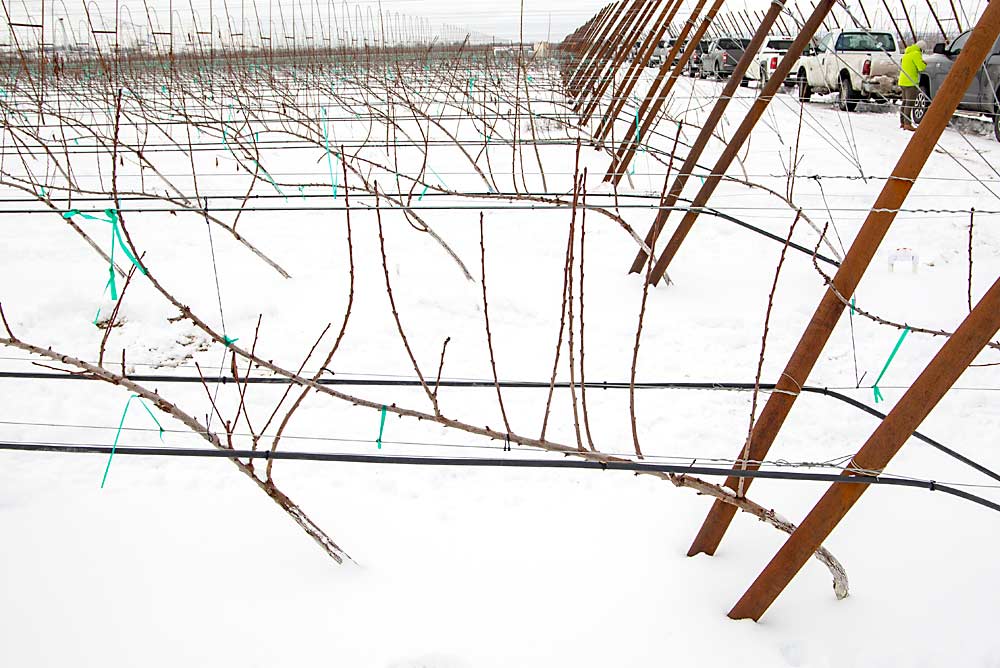
Crews prune to space uprights 8–10 inches apart, renewing them when they see blind wood or too much lateral branching. The goal is to produce cherries on spurs on the upright, not on lateral branches.
The planar nature of the UFO system lends itself to using handheld string thinners, if needed, Oliver said.
Whiting expressed concern that the tree would lose energy for healthy renewal growth toward the end of the 8-foot space.
However, Oliver said that if the trunk stays horizontal or slightly upward, the end of the tree won’t lose vigor. And to fill space more quickly, Oliver’s crews take the first upright off the trunk and bend it back toward the terminal of the neighboring tree.
Just across a dirt road, grower Shawn Gay showed tour attendees his Coral Champagne cherries on Gisela 6 rootstocks and Chelan cherries on Mazzard roots, both planted at a 12-by-6 spacing. Planted in 2018, the trees are trained with four-leaders.
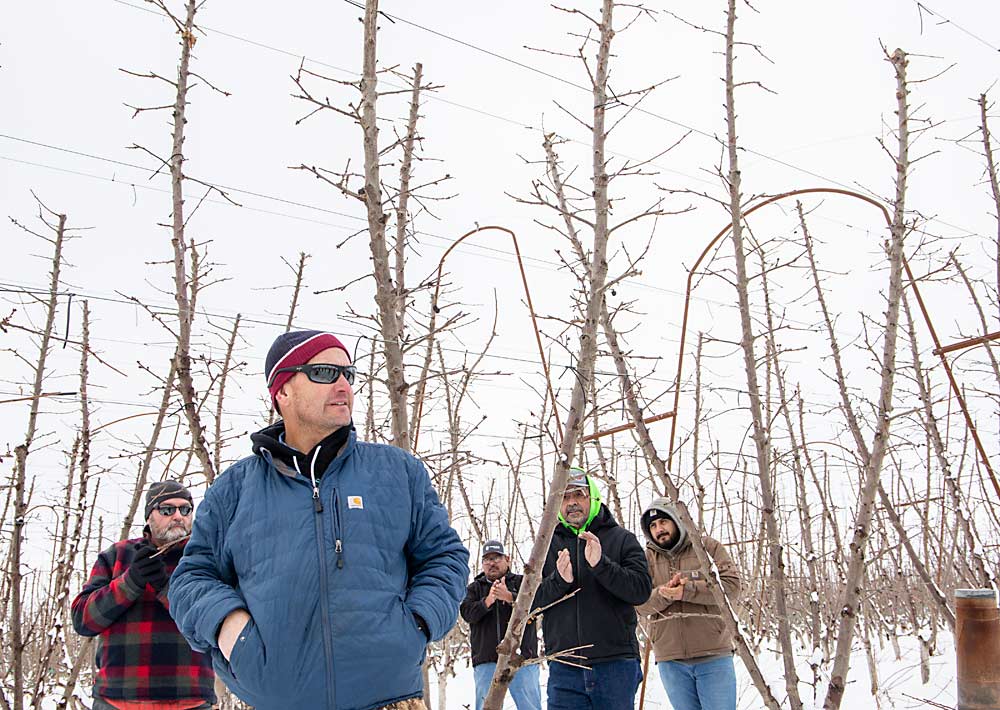
Gay takes a bit of a hands-off approach to training. When the trees were young, he trained his four leaders to the V-trellis wires at a 3-foot spacing, but he now allows laterals to break where they wish and does not tie or clip them to the wires.
He prunes to keep the fruiting walls in a two-dimensional shape and leaves 6–8 inches between each lateral. To encourage breaks in blind spots, his crews notch with a blade dipped in a Promalin mixture.
However, he has switched newer plantings to a 3.5-foot tree spacing with two-leader Ys because trees more consistently produce two leaders than four, making management simpler, he said.
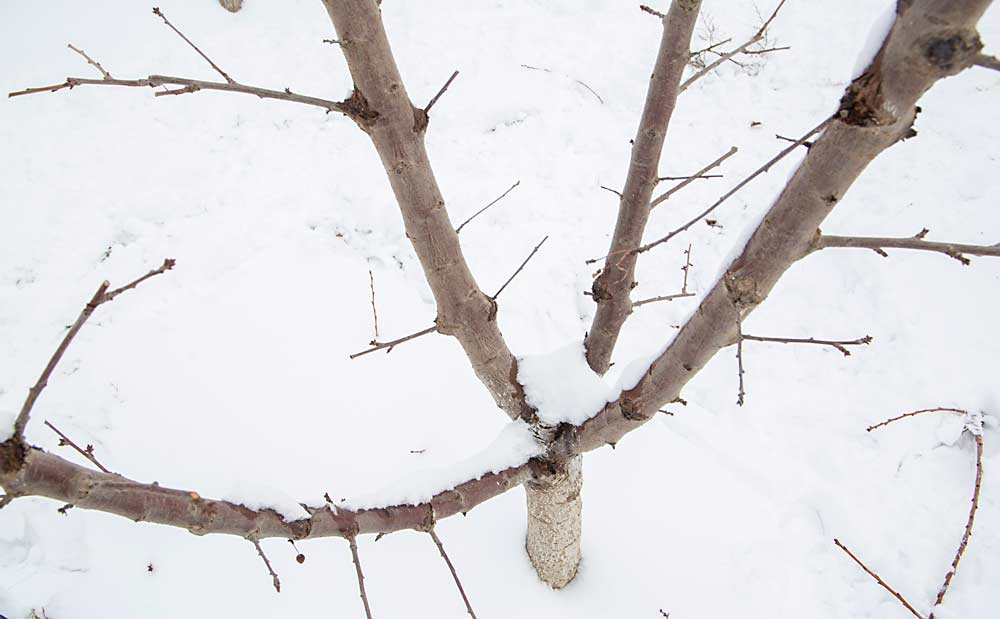
The system lends itself to the use of platforms and summer pruning, especially in the high branches, and to hedging shortly after harvest, to allow light to reach the bottoms of the trees.
After the trees have reached full height, his crews remove lower trellis wires, making it easy for people and tools to pass underneath.
North of Grandview, Allan Bros. orchard managers showed the tour group a formal two-leader Y-trellis Tatura system of Skeena cherries on Mazzard rootstocks. Spacing is 13 by 5 for the orchard planted in 2018.
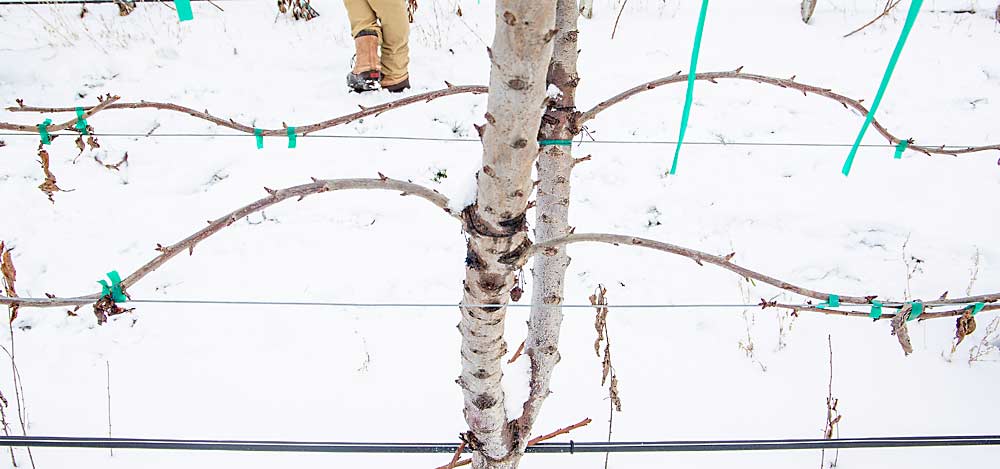
Company crews train fruiting lateral branches not only sideways, but down, to the nearest trellis wire to reduce the limb’s vigor and make it more fruitful, said Luke Anderson, area manager for Allan Bros. The goal is to train it lower than the point of origin, the spot where it breaks from the leader.
The company uses a similar training system for all its modern cherry blocks, Anderson said.
The system keeps vigor under control, allows uniform sunlight, lends itself to platform use and even aids in crop estimates, which are expected of cherry producers, even in January, Anderson said. He and other managers use historical data to make estimates, but uniform tree training gives him a mathematical basis, too.
The trick in the system is to stay ahead of renewal, Anderson said. Crews often look a year ahead for a renewal branch to train down to replace an older one.
Allan Bros. sets the Y-shape of the trellis at 80 degrees, steeper than for apples. Managers want sunlight to reach the fruit wall from the row side, not just the inside of the Y, Anderson said. They keep the trees 12.5 feet high.
—by Ross Courtney

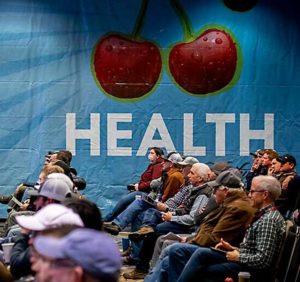
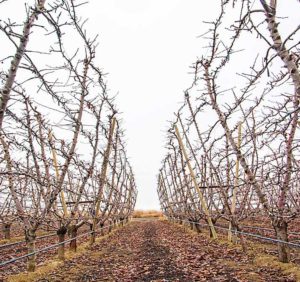





Leave A Comment